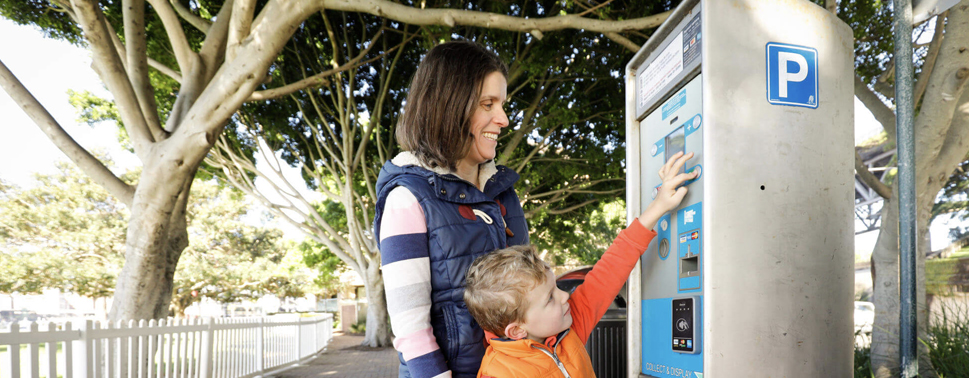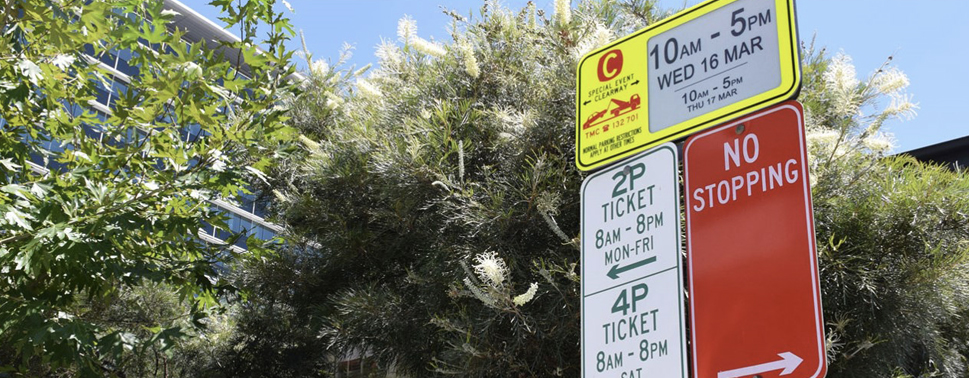






Search and compare prices at thousands of parking locations.

Select a car space, edit your booking time and pay securely.

Follow the easy directions and access instructions.
August 21, 2024 | By Ignatia Belle
Understanding parking signs in Australia is crucial for avoiding fines and ensuring a smooth driving experience. Whether you’re driving through a busy city or a quiet suburban street, knowing how to interpret these signs can save you both time and money. Moreover, practising environmentally conscious driving habits, staying informed about the latest electric vehicle trends in Australia, and reducing your carbon footprint are all integral parts of being a responsible driver today.
Parking signs in Australia can be straightforward or complex, depending on the location. These signs are not just about avoiding fines; they are also about keeping our roads safe and accessible for everyone. Ignoring or misunderstanding parking signs can lead to hefty fines, vehicle towing, or worse, posing a risk to other road users. That’s why it’s essential to take the time to understand what each parking sign means.
Parking signs in Australia often include a combination of letters, numbers, arrows, and symbols. Each element provides specific information about where and when you can park. To avoid any confusion or potential fines, it’s important to carefully read and interpret these signs. Below, we’ll break down the most common parking signs and what they mean.
The letter ‘P’ on a sign indicates that parking is allowed in the area. However, the presence of a number before the ‘P’—such as 2P or 1P—indicates the maximum number of hours you can park there. For example, 2P means you can park for up to two hours. It’s crucial to note that exceeding this time limit, even by just a few minutes, can result in a fine.
A parking sign that includes the word “meter” means that the parking space is metered. This means you’ll need to pay for the time your vehicle is parked there. Payment can typically be made via a parking machine or an app. Remember, time limits still apply, so even if you’ve paid for parking, you can’t extend your stay beyond the time allowed by the sign.

Parking signs in Australia often specify certain days and times when restrictions apply. For example, a sign might say “2P Mon-Fri 8 am-6 pm.” This means you can park for up to two hours between 8 am and 6 pm from Monday to Friday. Outside these hours, parking may be unrestricted, but it’s important to check the entire sign for any additional information.
Public holidays are an exception to these rules (in most states). If a sign specifies days of the week, those restrictions do not apply on public holidays unless stated otherwise. For instance, if a sign says “1P weekdays,” you can park longer on a public holiday that falls on a weekday.
Arrows on parking signs indicate the direction in which the parking restrictions apply. An arrow pointing to the left means the restrictions apply to the parking spaces to the left of the sign. It’s crucial to park only within the area indicated by the arrows to avoid fines.
Disabled parking spaces are clearly marked with a white wheelchair symbol on a blue background. These spots are reserved for those with a valid disabled parking permit. Parking in these spaces without the proper permit is not only illegal but also inconsiderate to those who need these spaces the most.

A “No Parking” sign, represented by a ‘P’ in a red circle with a line through it, does not mean you can’t stop at all. You can stop in a No Parking zone for up to two minutes to drop off or pick up passengers or goods. However, you must stay within three meters of your vehicle. This allows for quick stops without causing significant disruption to traffic.
In contrast, a “No Stopping” sign means exactly that—no stopping, at any time, for any reason. These signs are marked by an ‘S’ in a red circle with a line through it. Ignoring a No Stopping sign can result in a fine, as well as posing a significant safety risk by obstructing traffic or pedestrian pathways.
Clearways are areas where parking or stopping is not permitted during certain times, usually to ensure smooth traffic flow during peak hours. These signs feature a white ‘C’ on a red background. If you park in a clearway during restricted times, your vehicle is likely to be towed, as it can cause significant traffic congestion.

Parking in areas without signage doesn’t mean you can park anywhere. There are still rules to follow to ensure road safety and access for everyone. For example, when parking on a suburban street without signs, always park in designated bays if available. Make sure not to block driveways or intersections and leave enough space for other vehicles to pass.
When parking near intersections, leave at least 20 metres between your vehicle and the intersection if there are traffic lights. If there are no traffic lights, maintain a distance of at least 10 metres. This helps other drivers see clearly and make safe turns without obstructions.
For electric vehicle (EV) owners, parking comes with additional considerations. When parking, make sure to choose spots near charging stations, especially if you need to charge your vehicle. Many parking facilities in Australia now offer dedicated EV parking spaces with charging stations, making it convenient to top up your battery while you shop or run errands.
Additionally, consider investing in a monthly parking space for your EV. This allows you to charge your vehicle anytime you need, giving you more flexibility and security that you won’t spend hours doing loops around the block. Share with Oscar is a great option for Monthly EV Parking.
Receiving a parking fine can be frustrating, but it’s important to handle it correctly. In most cases, parking fines are issued by local councils, and the instructions for payment or contesting the fine will be provided on the ticket. If you believe the fine was issued in error, you can contest it through the appropriate channels, but be aware that there are strict criteria for rescinding fines.
Understanding parking signs in Australia is essential for any driver. By taking the time to read and interpret these signs, you can avoid fines, drive more safely, and contribute to a better environment. Whether you’re parking in a busy city or a quiet suburb, knowing the rules helps everyone share the road more effectively.
To ensure your parking experience is stress-free, consider using Share with Oscar to find convenient and affordable parking. With Share with Oscar, you can pre-book your parking spot, saving you time and hassle. Enjoy your day out knowing that your parking is sorted, so you can focus on what matters most—whether that’s shopping, dining, or simply enjoying your day.
Happy Parking!